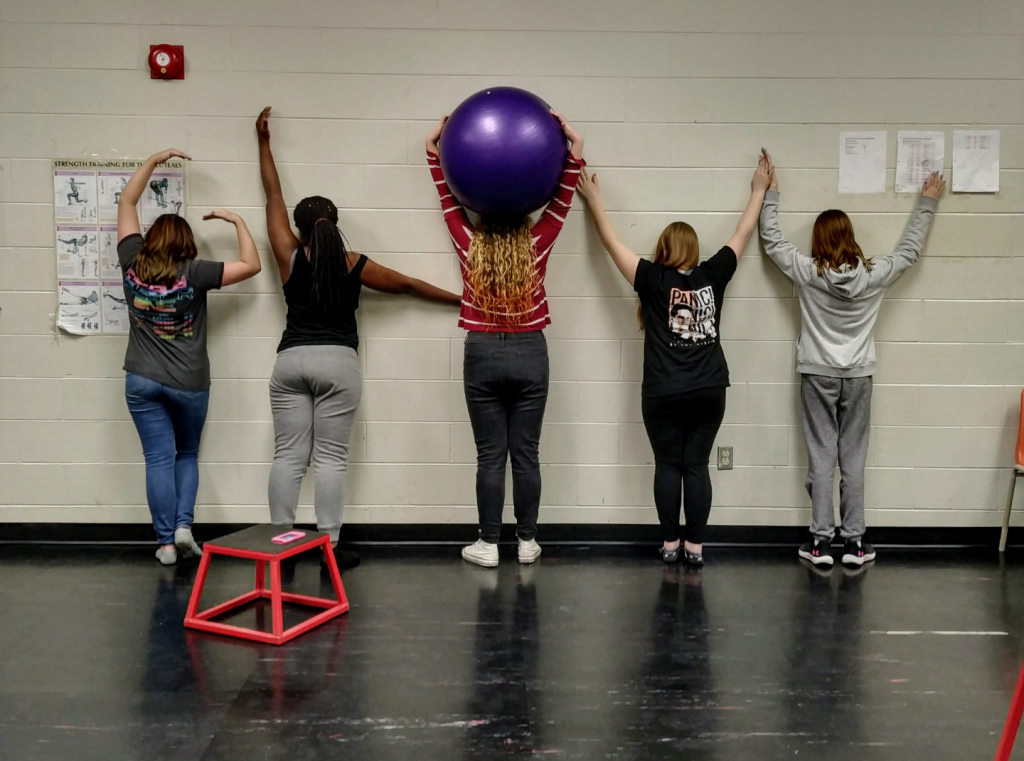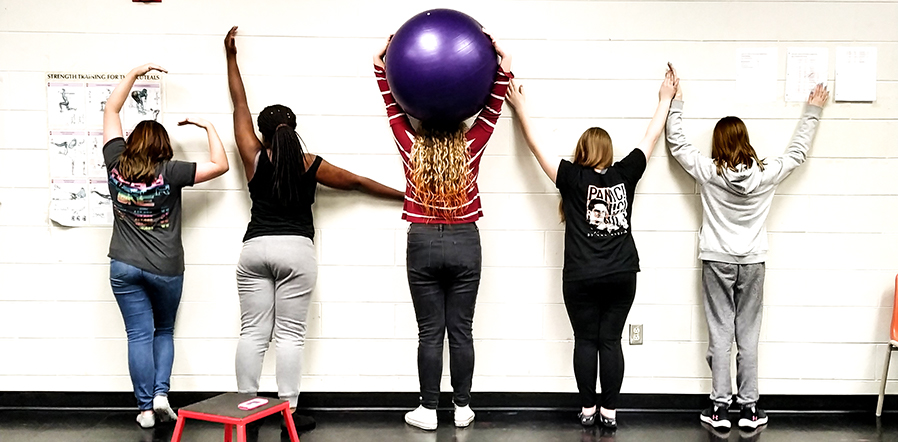
A guest blog post by YWCA Cambridge GLOW Coordinator Samantha Germann
GLOW, (an acronym for Girls’ Life Of Wellness) is a holistic wellness program that makes space for young people ages 8 to 14 to explore all things health in a safe, inclusive and flexible space.
The program was formed as a response to the consistent feedback YWCA Cambridge receives from participants and caregivers alike about wanting more spaces to unpack topics such as body image, mental health, what health really means, where those ideas come from and so much more. GLOW, like the rest of our programs, run through a participant-led philosophy, which means the content of the program is decided on by participants rather than through a pre-planned curriculum. This ensures that the content is relevant to our participants and addressing their needs.
As a GLOW coordinator, I have the privilege of interacting with so many young people in our community. Something I hear brought up all the time is gym class, and I think that might surprise some folks to hear.
I find participants want more than a space to exercise; they want space to unload their frustrations with gym class. Commonly these discussions are self-initiated and often already in action when I walk into program. I hear from participants that gym class feels like a risk they have to take weekly; gym class is an inherently vulnerable experience for cis girls, trans girls and non-binary folks in particular and the students are longing for a safe space to unpack these feelings.
My go-to question for participants when they raise the issue of gym class is; “if you had more control over gym, what would change?” The most common answer I hear is that they would have more choice over what they wear and what they do in gym class. Usually this comment is followed by a description of the clothing they’re asked to wear and specifically what they feel insecure about when they’re wearing it. What we’ve found in GLOW is that providing the opportunity for choice plays a huge part in creating a safe space. This safe space empowers participants to be vulnerable, and to share things they’re often not comfortable sharing in other spaces.
Once when I asked the above question during a GLOW session, a participant said – more flippantly than I was expecting – “usually when we are skipping or jumping, the girls all stand and face the wall so that people can’t stare at us as we jump up and down.” I sat in silence for a moment as I remembered my eerily similar experience in gym class almost 20 years ago. How can it be that this is still the environment that young people are learning in? As adults, I think it’s easy to forget how it feels to have someone else tell us how to dress our body. For many of us, when we choose to participate in movement of some kind, we have final say in what we wear. We get to walk through stores, pick out pieces, try them on and see how we feel in the clothing before we make a purchase. We also have the privilege of choosing the kind of movement we are going to participate in and potentially more importantly, what kinds of movement we choose to not take part in, without having to justify our choices.
At YWCA Cambridge, our hope in the GLOW program is that we can create a space that allows participants to move without having to modify, mask or hide their bodies. For many GLOW participants, this program serves as a space to take back their body autonomy. It is a space where they pick and choose the games we play and the forms of movement we do and do not bring into program. They get to remind themselves what it feels like to find joy in movement with no strings attached, no right or wrong and no ulterior motive.
Overwhelmingly, we’ve found that when people are given space to discover what they need in order to feel comfortable, the “I don’t want to” often shifts to “I would like to do it, but in this way.” The benefits of this new-found autonomy are enormous – participants note improvements in social, emotional and physical health which extends to all facets of their lives.
If the goal of gym class is to get kids moving, but we aren’t making sure they feel safe and comfortable enough to do it, is this not counterproductive? Can we not do better? We know that for girls in particular, they reach a point in school where their preoccupation with their bodies as they relate to the unrealistic beauty standards has a direct negative impact on their grades and willingness to participate.
The intention of GLOW is to make a space for participants to move from “how do I look?” to ”what am I capable of?” in movement spaces. GLOW simply poses the question, “if young people are given room to create a movement space that feels safe for them, does their willingness to participate change?’ Throughout the almost two years of running the GLOW program, I would argue that there’s been an unwavering response of “YES” to this question. We see it in our participant numbers, rate of return to program and throughout the conversations, we are able to have with both caregivers and participants alike. As one 10-year-old participant said to me, “I just feel good in this space; I know I am accepted here,” and that’s the goal.

